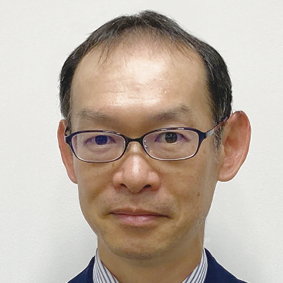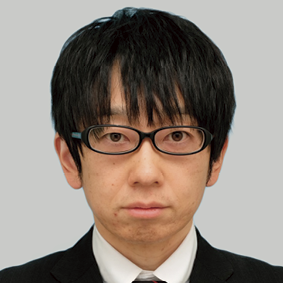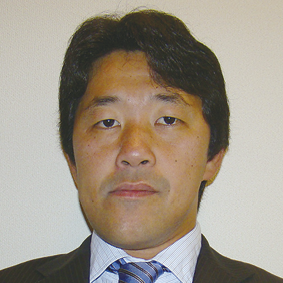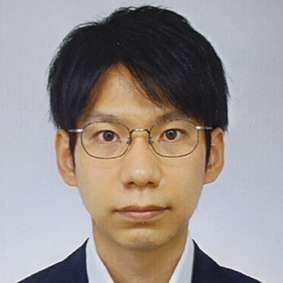GLOBAL INNOVATION REPORT2Digitalization Trends and Policies for Achieving 24/7 Carbon-free Energy
Highlight
A wide range of policies are being implemented globally to achieve a carbon neutral society. Among these, a new trend is to expand initiatives for achieving 24/7 carbon-free energy, which is the continuous utilization of renewable energy sources that are subject to generation fluctuations depending on the weather. It has become widely accepted that in order to achieve true carbon neutrality, management of renewable energy generation and consumption at a highly granular hourly level is required. Hitachi is participating in projects such as the EnergyTag initiative for the standardization of 24/7 carbon-free energy, and is collaborating with Hitachi Energy Ltd., to develop specific solutions that utilize digital technologies. This article describes Hitachi’s efforts to contribute to the decarbonization of society by implementing a digital transformation cycle for achieving carbon neutrality based on a data-driven approach using highly granular data.

Global Trends for Achieving 24/7 Carbon-free Energy
Governments worldwide are implementing various policies such as utilizing energy attribute certificates (EACs) and power purchase agreements (PPAs) to achieve a carbon neutral society. However, full decarbonization will require even greater deployment and expansion of renewable energy, creating new challenges in related markets and technology development fields. On the other hand, because the deployment of renewable energy is not the ultimate target, to achieve carbon-free energy (CFE) additional actions will be required.
The EAC trading system is not directly linked to timing of electric power generation and the physical conditions of the electric power system, resulting in temporal and spatial discrepancies. In order to bridge this gap, it is necessary to certify that the renewable energy procured under agreements based on hourly units is the same as the electric power supplied to the demand side. Since renewable energy is affected by weather and other factors, the deployment of such energy is subject to both time and location constraints when generating electricity. Therefore, there is a need to encourage the new deployment of renewable energy that meets these requirements, while continuously and effectively integrating the renewable energy into existing power systems and trading systems. 24/7 CFE* has been conceptualized to achieve this. Under 24/7 CFE, matching CFE generation and consumption at a highly granular temporal level of an hour or less is positioned as a critical requirement.
The EnergyTag(1) initiative is based in the UK and was established to promote a deeper understanding of 24/7 CFE. In March 2022, the EnergyTag initiative published standards and guidelines for Granular Certificates (GCs), which are issued, traded, and written off similarly to EACs (see Figure 1). Hitachi joined in the standardization process and is one of more than 100 supporter organizations of EnergyTag. In the data center field, the implementation of GCs has already started spontaneously, and studies are continuing for application in other fields such as green hydrogen, methane, and ammonia. The international standardization organization for renewable energy certificates (I-REC)(2) is expanding its scope to fields such as decarbonization and hydrogen, in addition to certification by hourly unit. In the future, the deployment of 24/7 CFE is expected to be an important step toward the disclosure of greenhouse gas (GHG) emission amounts, which is required for strict carbon accounting.
- *
- The concept of supplying electric power with zero carbon emissions to the power supply network and using such power in real time, 24-hours a day, 7-days a week (continuously).
Importance of Disclosing GHG Emission Information
A growing number of companies worldwide are disclosing information about their decarbonization activities in conformance with the Task Force on Climate-related Financial Disclosures (TCFD)(3). According to information published by TCFD on September 22, 2022, a total of 3,819 companies and organizations around the world had agreed to disclose information of which, 1,062 companies and organizations are in Japan.
TCFD disclosures are composed of four categories, which are Governance, Strategy, Risk Management, and Metrics and Targets. The Metrics and Targets category requires the calculation and reporting of the amount of GHG emissions according to internationally recognized GHG protocols. The GHG protocols are divided into three categories, which are Scope 1 (direct emissions), Scope 2 (indirect emissions), and Scope 3 (other emissions), depending on how the gas is emitted and who emits the gas. As the deployment of renewable energy continues to grow, in addition to asset management and energy management, tasks for understanding, calculating, and reporting GHG emissions will become even more important in the future at companies and other organizations that report emissions. In Japan, the Tokyo Stock Exchange (TSE) revised its Corporate Governance Code in June 2021 to make it compulsory for the 1,839 companies listed on the Prime Market to disclose information according to the TCFD framework.
Furthermore, under Scope 3, reporting is not confined to the individual company, but is required for the entire supply chain, which reveals to the customer the total carbon amount related to the delivered product. Already, there are cases globally of customers demanding companies to certify that the electric power related to the delivered product originates in renewable energy on an hourly basis. Such calls for proof that the energy itself is carbon-free are expected to spread globally in the future.
Innovative Energy Management Based on Digital Technology Utilization
Hitachi is strengthening its digital solutions and utilizing a wide range of electric power system solutions. In the future, Hitachi will provide even more GC-related solutions to contribute in a comprehensive manner to customer decarbonization. Hitachi will provide highly trustworthy certification, risk reductions, and optimal procurement for electric power and GCs to form an ecosystem that takes into account activities covering various stakeholders and end-to-end (E2E) processes (see Figure 2). Hitachi’s aim is to coordinate the behavior of various related stakeholders to ensure commitment to and cooperation with the local community.
Currently, EACs such as the RECs in the USA and the guarantee of origin (GO) certificates in Europe are purchased either in the form of electric power via PPAs, or are purchased separately via a method that is not linked to the electric power after procuring power from a power trading market. In contrast, Hitachi’s innovative energy management utilizing digital technology matches consumers and suppliers in advance to procure the power and the linked GCs at the same time, which enables trading on a private market managed by the electric power retailer. If linked GCs cannot be acquired according to customer requests, GCs not linked to the power can also be provided in a supplementary manner. In addition to operational planning for power supply and demand, past results and forecast data are used to optimize supply and demand. This enables pre-matched trading that uses the flexibility of both supply and demand to enable the maximum utilization of unused renewable energy. Renewable energy trades between supply and demand are matched at a highly granular level that enables energy traceability to be provided for electric power that includes both renewable energy and other energy sources.
Energy storage plays an important role in providing flexibility over a wide range of renewable energy uses. As such, Hitachi is developing GC management technologies for storage battery charge and discharge power to make it possible to provide consumers of the charged and discharged renewable energy with GCs. Since electric power loss occurs when the electricity of storage batteries is charged or discharged, this can be taken into account to implement highly reliable GC management. A future goal of Hitachi is to achieve 24/7 CFE by optimizing the entire system including power consumption, generation, and equipment such as storage batteries in the power grid.
As a part of disclosing GHG emissions information, GCs will be used when reporting about decarbonization throughout the entire supply chain for products manufactured using 24/7 CFE, which will enable final certification of the products as being manufactured through fully sustainable methods. Such proof is essential for environmentally conscious manufacturers, service providers, end users, and other customers. As a result, the use of GCs will increase the value of environmentally friendly claims by communicating to the outside world that the power utilized in manufacturing processes is 24/7 CFE.
Digital Transformation Cycle for Phased Implementation of Carbon Neutrality
For customers and other energy consumers, achieving carbon neutrality by 2050 is an extremely tough challenge. It is important to accurately understand current conditions to create and then gradually implement a medium-to-long term strategy. However, many companies are likely to be unsure of how to devise policies that will meet such ambitious plans and targets.
Activities for achieving carbon neutral energy are divided into the four categories of “Strategy creation and update,” “Work design and system requirements,” “Highly granular operation management,” and “Report and review” (see Figure 3). Firstly, “Strategy creation and update” describes a roadmap for the actions to take by 2050. Then, “Work design and system requirements” designs specific implementation measures for short-term actions to take from the roadmap. This requires not only plans to increase renewable energy, but also operational considerations, such as the related equipment and work. Next, in “Highly granular operation management,” the carbon neutral policies are implemented and operations are performed continuously by increasing the renewable energy ratio steadily while also keeping an overall balance with cost effectiveness and operational excellence. Finally, in the “Report and review” phase, the results of improvements are identified and compared to the roadmap, and a report suitable for the objectives is generated. This report will serve as the basis for updating the roadmap for the second cycle. These four activities are not performed just once. Rather, as far as possible, they are implemented continuously and regularly while checking the most recent conditions of the business environment. This is important in order to steadily achieve carbon neutrality, a goal that is difficult to meet in the short term.
Policies for Providing Global Solutions
In 2020, Hitachi acquired the Power Grids business of ABB Ltd. (now known as Hitachi Energy Ltd.). Then, Hitachi Energy acquired the US company Pioneer Solutions LLC, enabling it to provide Energy Trading and Risk Management (ETRM)/RECTracker, and Emissions Tracker products(4) in the commodity/energy trading (including EACs) and risk management solution markets. The global team of business units, sales units, and research and development works together to provide comprehensive solutions that accelerate the 24/7 CFE utilization of customers and end users (see Figure 4).
Furthermore, to optimize power trading at a granularity of one hour or less, while comprehensively taking into account the environmental value, costs, and other various risks involved in power trading, Hitachi is developing highly granular energy traceability that enables GC trading management, advanced supply and demand matching based on power generation and demand forecasting, and GC management technologies for power charging and discharging of storage batteries. The comprehensive utilization of these policies will enable the continuous implementation of the digital transformation cycle for achieving carbon neutrality, resulting in the efficient use of renewable energy with no waste and helping to increase environmental value for customers.












